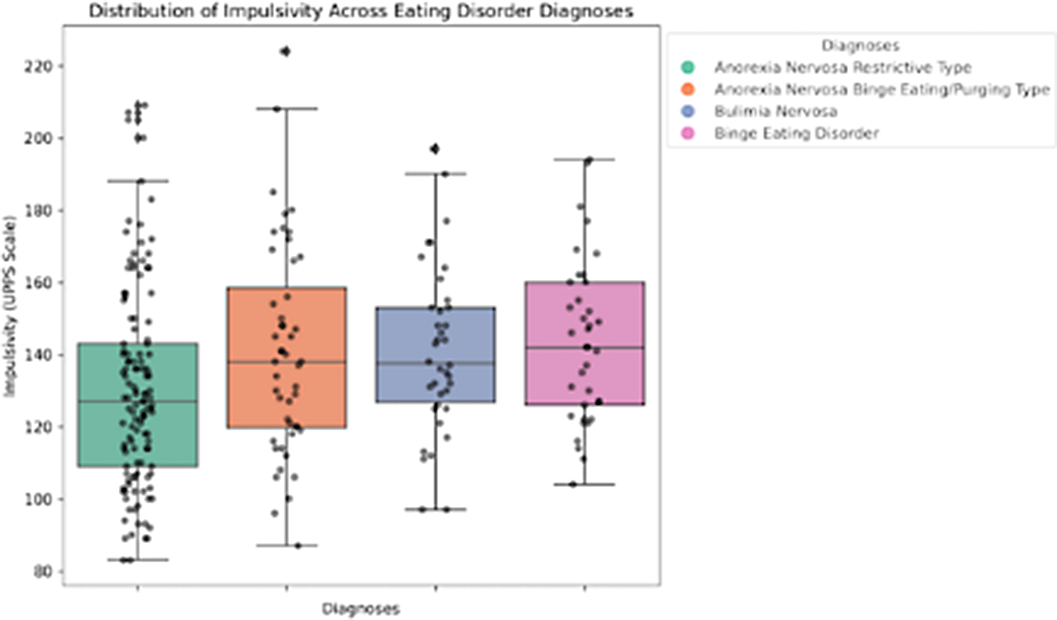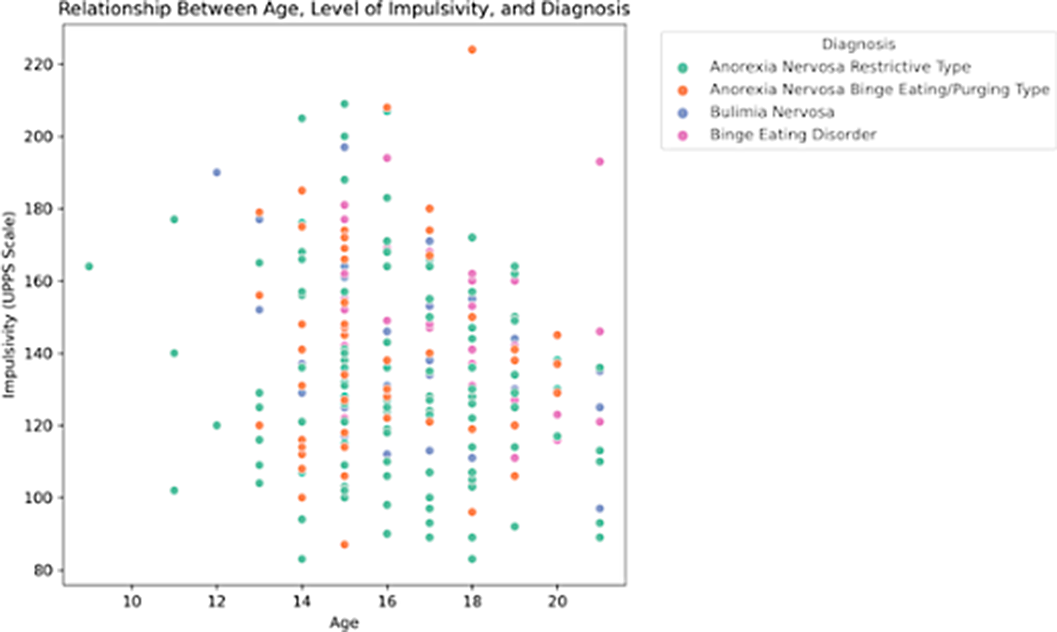No CrossRef data available.
Article contents
Comparative Analysis of Impulsivity Profiles in Children and Young Patients with Anorexia Nervosa Restrictive Type, Anorexia Nervosa Binge Eating/Purging Type, Bulimia Nervosa, and Binge Eating Disorder
Published online by Cambridge University Press: 27 August 2024
Abstract
High levels of impulsivity are associated with individuals suffering from eating disorders. Impulsivity is a complex and multidimensional construct, with elevated impulsivity traits posing a specific risk in relation to binge-eating and purging disorders when compared to restrictive types eating disorders.
Our aim was to identify the difference in impulsivity profile in children and young patients with eating disorders, including anorexia nervosa restrictive type (ANR), anorexia nervosa binge eating/purging type (ANP), bulimia nervosa (BN) and binge-eating disorder (BED).
Patients aged 21 years or younger, meeting the DSM-V criteria for ANR (n=125), ANP (n=48), BN (n=38), and BED (n=37) were enrolled in the study. The participants had an average age of 16.3 ± 2.15 years. Data collection involved the administration of the UPPS Impulsiveness Scale (UPPS). Bilateral Student’s t-tests were conducted to evaluate potential statistically significant differences among the diagnostic groups.
Our results indicated statistically significant differences in total impulsivity between patients diagnosed with ANR and each of the other eating disorders including ANP (T-Stud -2,19 p < .02), BN (T-Stud -2.17p < .03), and BED (T-Stud -2,68 p < .008) (Figure 1). However, no significant differences were observed among the other eating disorder groups. Nevertheless, it is noteworthy that heightened impulsivity traits, particularly sensation-seeking tendencies, were a common feature among all subtypes of eating disorders, regardless of their specific diagnostic category. Impulsivity and age also exhibited a statistically significant negative correlation (r = -0.13, p = .03) (Figure 2).
Image:

Image 2:

Impulsivity in individuals with restrictive and binge/purgative eating disorders differ significantly, with lower levels of impulsivity in ANR (Figure 1), except for sensation-seeking tendencies. This suggests that both groups may share a similar inclination for seeking intense emotions or engaging in emotionally arousing behaviors. As individuals age from adolescence to young adulthood, there is a tendency for impulsivity levels to decrease (Figure 2).
None Declared
- Type
- Abstract
- Information
- European Psychiatry , Volume 67 , Special Issue S1: Abstracts of the 32nd European Congress of Psychiatry , April 2024 , pp. S108 - S109
- Creative Commons
- This is an Open Access article, distributed under the terms of the Creative Commons Attribution licence (https://creativecommons.org/licenses/by/4.0/), which permits unrestricted re-use, distribution, and reproduction in any medium, provided the original work is properly cited.
- Copyright
- © The Author(s), 2024. Published by Cambridge University Press on behalf of European Psychiatric Association





Comments
No Comments have been published for this article.